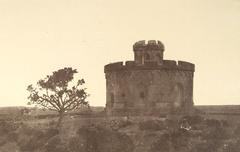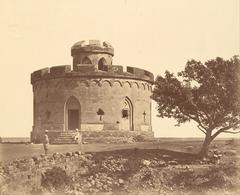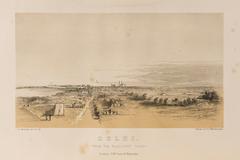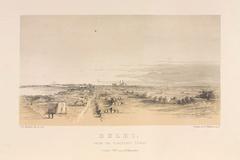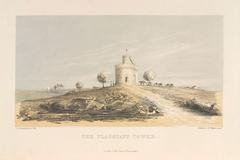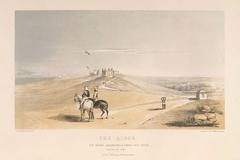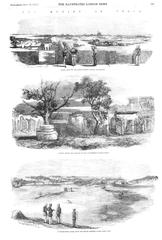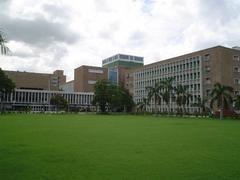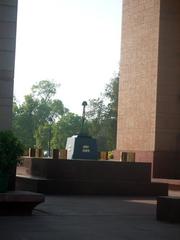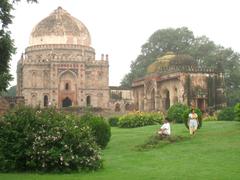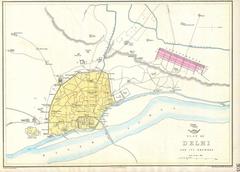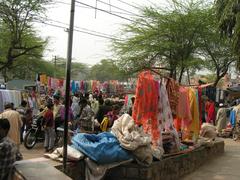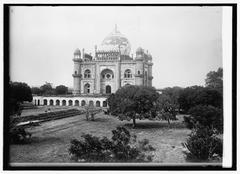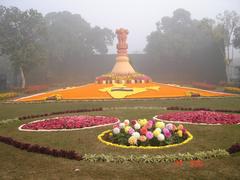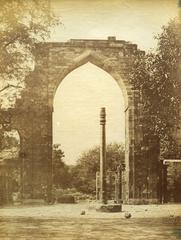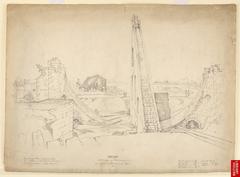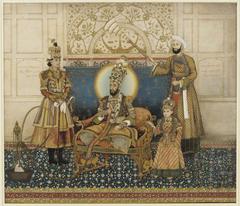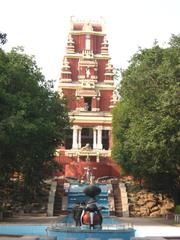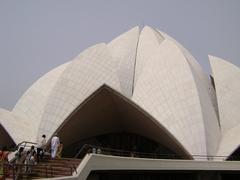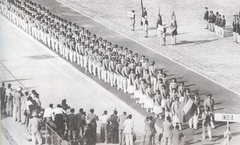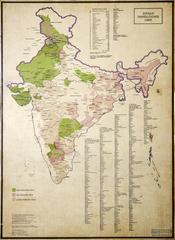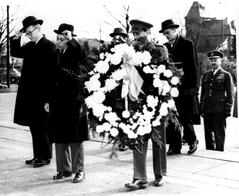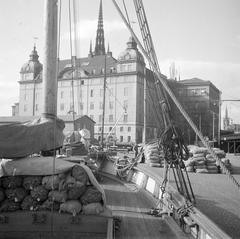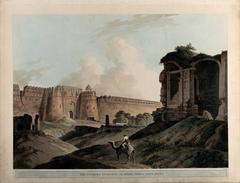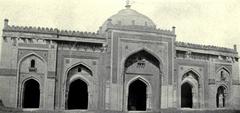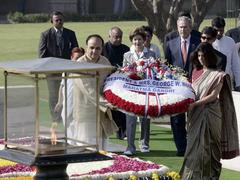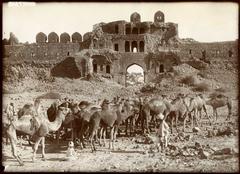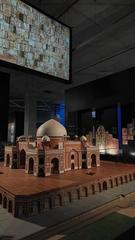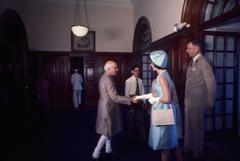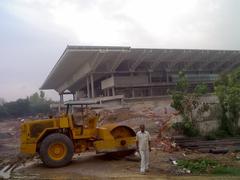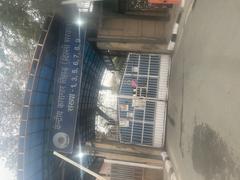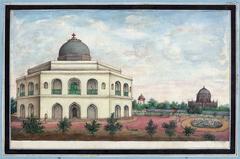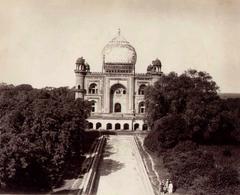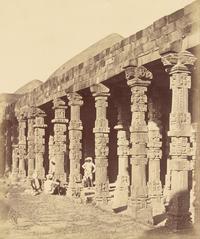
Guide to Visiting Flagstaff Tower, New Delhi
Date: 31/07/2024
Introduction
Flagstaff Tower, nestled in the Kamla Nehru Ridge near Delhi University’s North Campus, stands as a poignant testament to India’s colonial past and its pivotal role during the First War of Indian Independence in 1857. Constructed in 1828 by the British Indian Army, this historical monument initially served as a signal tower and military refuge. Its significance was further cemented when it became a sanctuary for British women and children during the tumultuous uprising of 1857 (Wikipedia). With its red sandstone exterior and castellated architecture, the Flagstaff Tower not only showcases British colonial architectural styles but also medieval European military design (Travelsetu). This comprehensive guide aims to provide visitors with an in-depth understanding of Flagstaff Tower’s historical context, architectural features, and practical visitor information, ensuring a well-rounded and enriching visit.
Table of Contents
- Introduction
- Historical Context and Purpose
- Structural Design
- Architectural Features and Elements
- Best Time to Visit
- How to Reach Flagstaff Tower
- Visiting Hours and Tickets
- Nearby Attractions
- Activities and Experiences
- Practical Tips
- Frequently Asked Questions
- Conclusion
Historical Context and Purpose
Flagstaff Tower was constructed in 1828 by the British Indian Army. Initially serving as a signal tower and a military refuge, it became a sanctuary for British women and children during the First War of Indian Independence in 1857, underscoring its historical importance (Wikipedia).
Structural Design
Exterior Architecture
The Flagstaff Tower is a one-room, castellated structure, resembling a miniature fort. Its red sandstone exterior, common in many of Delhi’s historical structures, reflects the British colonial architectural style and medieval European military architecture (Travelsetu).
Interior Architecture
Inside, the tower features a single circular room designed to accommodate up to a hundred people. The sparse interior reflects its utilitarian purpose, serving as a shelter during emergencies such as the 1857 uprising (Wikipedia).
Architectural Features and Elements
Signal Tower Functionality
The tower’s strategic location and height made it an ideal signal tower. Signals were likely communicated using flags, giving the tower its name.
Best Time to Visit
The optimal time to visit Flagstaff Tower is during the cooler months from October to March. During this period, the weather in Delhi is pleasant, with average temperatures ranging between 12°C to 27°C, making it ideal for sightseeing and outdoor activities. The air quality is generally better during these months, enhancing the overall experience. It is advisable to avoid visiting during the peak summer months of April to June when temperatures can soar above 40°C, making outdoor exploration challenging. The monsoon season, from late June to September, brings heavy rainfall, which can disrupt travel plans and outdoor activities due to waterlogged conditions.
How to Reach Flagstaff Tower
By Air
The nearest airport to Flagstaff Tower is the Indira Gandhi International Airport (IGI), approximately 22 kilometers away. From the airport, visitors can hire a taxi or use the Delhi Airport Metro Express to reach New Delhi Railway Station and then proceed by road.
By Train
The closest railway stations are New Delhi Railway Station (8 kilometers away) and Old Delhi Railway Station (9 kilometers away). Anand Vihar Terminal is about 20 kilometers from Flagstaff Tower. From these stations, visitors can hire a taxi, take an auto-rickshaw, or use the Delhi Metro services to reach the nearest metro station, Vishwavidyalaya Metro Station on the Yellow Line, and then proceed by road.
By Road
Delhi is well-connected by road. Visitors can reach Flagstaff Tower by taking an auto-rickshaw, taxi, or driving a private vehicle. GPS navigation can be used for precise directions to the location.
Visiting Hours and Tickets
Flagstaff Tower is open to visitors every day from 10:00 AM to 5:00 PM. There is no entry fee to visit the tower. However, guided tours and special events may have associated costs.
Nearby Attractions
Flagstaff Tower is located in the Northern Ridge area, close to several other notable attractions:
- Delhi University North Campus: A short distance from Flagstaff Tower, this area is known for its vibrant student life and historical significance.
- Kamla Nehru Ridge: Surrounding Flagstaff Tower, this lush green area offers a variety of flora and fauna, making it a perfect spot for nature walks and photography tours.
- National Zoological Park: Located a short drive away, this zoo is home to a wide variety of animal species and is a popular spot for families.
- Lodhi Gardens: A beautiful park featuring historical tombs and lush greenery, ideal for a relaxing stroll.
Activities and Experiences
Historical Exploration
Visitors can embark on a journey through time at Flagstaff Tower, learning about its role during the Indian Rebellion of 1857. Guided tours are available, providing in-depth historical insights.
Photography Tours
The Kamla Nehru Ridge offers a serene environment for photography enthusiasts. Guided tours help visitors capture the essence of this urban forest and the historic Flagstaff Tower.
Sunset Yoga
Experience the calming influence of nature with a sunset yoga session near Flagstaff Tower. These sessions are conducted on the serene grounds of Kamla Nehru Ridge, providing a peaceful retreat.
Culinary Tours
Explore the flavors of Delhi on a culinary tour around Flagstaff Tower. This tour not only indulges your taste buds but also provides insights into the culinary evolution influenced by Mughal and British recipes.
Picnicking
Spend a leisurely day picnicking in the verdant space beside Flagstaff Tower. Visitors are welcome to bring their own food and activities to enjoy a peaceful retreat within the city.
Practical Tips
- Dress Comfortably: Wear comfortable clothing and footwear suitable for walking and exploring the historical site and its surroundings.
- Stay Hydrated: Carry water bottles, especially if visiting during the warmer months, to stay hydrated.
- Use Sunscreen: Apply sunscreen to protect your skin from the sun, particularly if visiting during the day.
- Carry a Camera: The scenic beauty of Kamla Nehru Ridge and the historical significance of Flagstaff Tower make it a perfect spot for photography.
- Local Guides: Consider hiring a local guide to gain deeper insights into the history and significance of Flagstaff Tower.
- Safety Precautions: While the area is generally safe, it is advisable to stay in groups, especially if exploring the Ridge area.
- Respect the Environment: Ensure that you do not litter and respect the natural surroundings of Kamla Nehru Ridge.
- Check Weather Conditions: Before planning your visit, check the weather forecast to avoid any inconvenience due to extreme weather conditions.
- Plan Your Visit: Allocate sufficient time to explore not just Flagstaff Tower but also the surrounding attractions to make the most of your visit.
Frequently Asked Questions
Q: What are the visiting hours for Flagstaff Tower?
A: Flagstaff Tower is open to visitors every day from 10:00 AM to 5:00 PM.
Q: Is there an entry fee for Flagstaff Tower?
A: No, there is no entry fee to visit Flagstaff Tower.
Q: How can I reach Flagstaff Tower by public transport?
A: You can reach Flagstaff Tower by taking the Delhi Metro to Vishwavidyalaya Metro Station on the Yellow Line and then proceeding by road.
Q: Are guided tours available at Flagstaff Tower?
A: Yes, guided tours are available and provide in-depth historical insights into the site’s significance.
Q: What are some nearby attractions to Flagstaff Tower?
A: Nearby attractions include Delhi University North Campus, Kamla Nehru Ridge, National Zoological Park, and Lodhi Gardens.
Conclusion
Flagstaff Tower, with its rich historical significance and serene natural surroundings, offers a unique experience for visitors to New Delhi. From its strategic role during the Indian Rebellion of 1857 to its striking architectural features, the Tower stands as a symbol of resilience and historical importance. Visitors can explore the site’s history through guided tours, capture the scenic beauty of Kamla Nehru Ridge through photography, or simply enjoy a peaceful picnic in the verdant space. The optimal visiting period from October to March, combined with easy accessibility via air, train, or road, makes it an ideal destination for history enthusiasts and nature lovers alike. Whether you are a local resident or a tourist, Flagstaff Tower promises a journey through time, offering insights into India’s colonial past and the enduring spirit of its people. For more detailed information and updates, consider following our related posts and social media channels.
References
- Wikipedia, 2023, Wikipedia
- Travelsetu, 2023, Travelsetu
